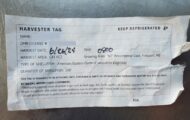There is a mystery E. coli outbreak that has sickened dozens of people in Michigan and Ohio. After days of counties reporting the illnesses, the CDC got involved in the investigation yesterday. At least 29 people in those states are sick, and nine patients have been hospitalized. What could be causing this outbreak? We started thinking about the history of fast food E. coli outbreaks over the years.

Unfortunately, outbreaks and fast food restaurants are a fairly common combination. There have been many Salmonella, E. coli, and cyclospora outbreaks associated with those restaurants. The main fast food restaurant chains in this country include Wendy’s, McDonald’s, Jimmy John’s, Jack in the Box, Burger King, and Hardees, among others. These are the E. coli outbreaks linked to fast food restaurants since 2013.
History of Fast Food E. coli Outbreaks
More than 500 people were sickened, and four people died in the 1993 Jack in the Box E. coli O157:H7 outbreak. The illnesses were linked to undercooked ground beef. Traceback identified five slaughter facilities in the United States and one in Canada as at the likely sources of this outbreak
Jimmy John’s was the source of an E. coli O26 outbreak in 2012 that sickened 29 people in 11 states. Raw clover sprouts were identified as the contaminated food in that outbreak.
Cucumbers that were imported from Mexico were the source of an E. coli outbreak in 2013 that sickened nine people who ate at Jimmy John’s restaurants.
In 2013, an E. coli outbreak sickened eight people who ate at three Denver area Jimmy John’s fast food locations. Officials did not identify the contaminated food.
An E. coli O121 outbreak in 2014 that was linked to Evergreen raw clover sprouts served at Jimmy John’s, Pita Pita, and Daanen’s Deli venues sickened 19 people in six states.
Two Shiga toxin-producing E. coli (STEC) outbreaks that sickened at least 60 people in 14 states were linked to Chipotle Mexican Grill restaurants in 2015. The pathogen in that outbreak was E. coli O26. Investigators never found the source.
A 2019 E. coli O103 outbreak in Kentucky was linked to fast food consumption, but no specific restaurant chains was identified. At least 20 people were sickened in that state, and there may have been more patients in other states.
Also in 2020, an E. coli O103 outbreak at Jimmy John’s restaurants was linked to clover sprouts. At least 51 people were sickened in that outbreak.
How to Protect Yourself
There are many foods that can be contaminated with this pathogen. Ground beef, romaine lettuce, and raw sprouts are the most common culprits. Most fast food restaurants cook their ground beef to well done, although contamination after cooking can occur. If you are cooking ground beef at home, always cook to 160°F.
If you are in a group that is high risk for complications from food poisoning, consider not ordering raw sprouts at fast food restaurants. That food is considered risky because of the way it is produced and because of the history of illnesses associated with it.
And know the symptoms of an E. col infection. The classic characteristic symptoms include severe and painful abdominal cramps and bloody diarrhea. Some people may have a low grade fever, nausea, and vomiting. See a doctor if you develop these symptoms.

If you have been sickened with a Listeria infection, please contact our experienced attorneys for help with a possible lawsuit at 1-888-377-8900 or 612-338-0202.




